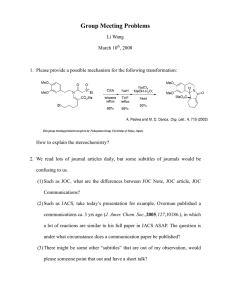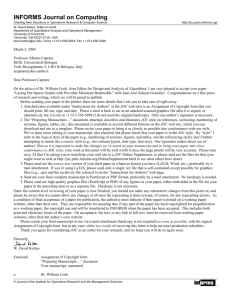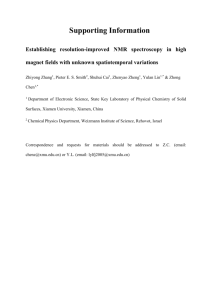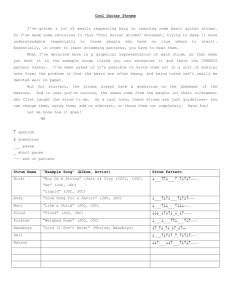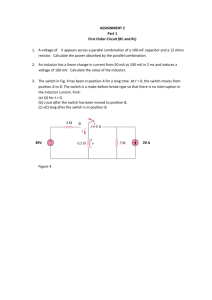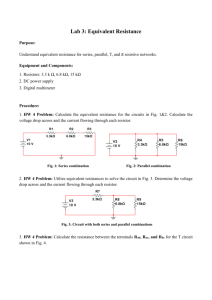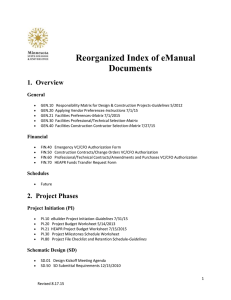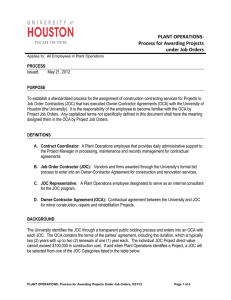Analysis of the Tuggle Front End – Part III
advertisement
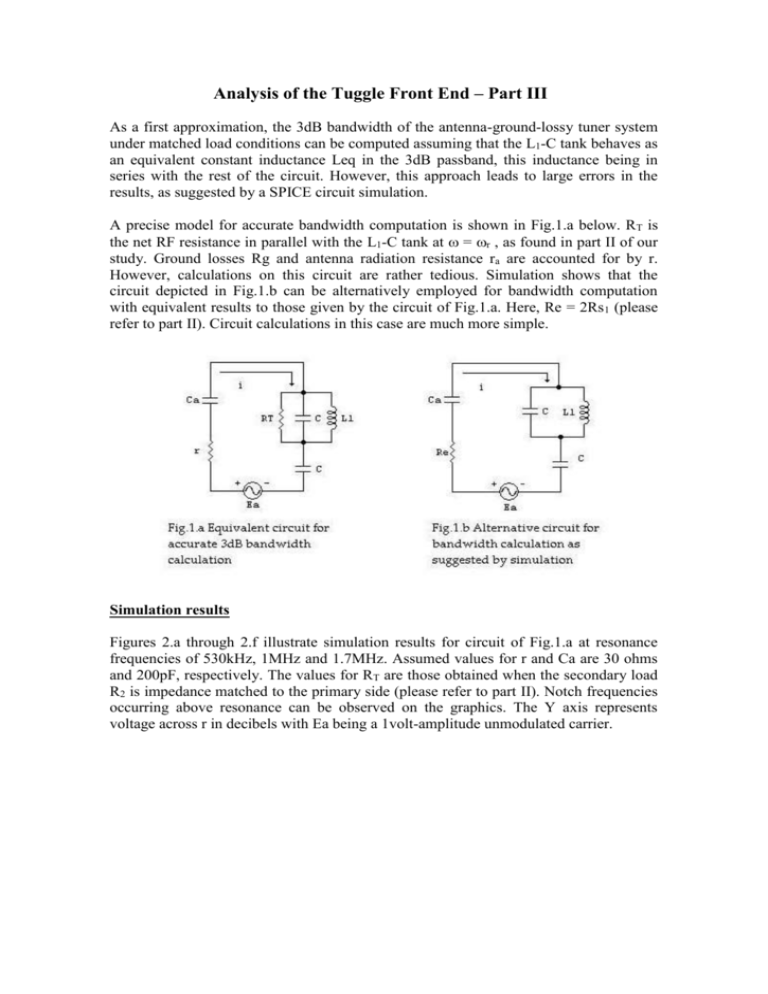
Analysis of the Tuggle Front End – Part III As a first approximation, the 3dB bandwidth of the antenna-ground-lossy tuner system under matched load conditions can be computed assuming that the L1-C tank behaves as an equivalent constant inductance Leq in the 3dB passband, this inductance being in series with the rest of the circuit. However, this approach leads to large errors in the results, as suggested by a SPICE circuit simulation. A precise model for accurate bandwidth computation is shown in Fig.1.a below. RT is the net RF resistance in parallel with the L1-C tank at = r , as found in part II of our study. Ground losses Rg and antenna radiation resistance ra are accounted for by r. However, calculations on this circuit are rather tedious. Simulation shows that the circuit depicted in Fig.1.b can be alternatively employed for bandwidth computation with equivalent results to those given by the circuit of Fig.1.a. Here, Re = 2Rs 1 (please refer to part II). Circuit calculations in this case are much more simple. Simulation results Figures 2.a through 2.f illustrate simulation results for circuit of Fig.1.a at resonance frequencies of 530kHz, 1MHz and 1.7MHz. Assumed values for r and Ca are 30 ohms and 200pF, respectively. The values for RT are those obtained when the secondary load R2 is impedance matched to the primary side (please refer to part II). Notch frequencies occurring above resonance can be observed on the graphics. The Y axis represents voltage across r in decibels with Ea being a 1volt-amplitude unmodulated carrier. Figures 3.a through 3.f show simulation results for circuit of Fig.1.b at resonance frequencies also of 530kHz, 1MHz and 1.7MHz. Again, r = 30 ohms and Ca = 200pF. Re = 2Rs1 , and it can be easily shown that: A Rs1 r 1 R P The Y axis on the graphics represents voltage across Re in decibels, with Ea being a 1 volt-amplitude unmodulated carrier. 3dB bandwidth calculations We shall now proceed to calculate the 3dB bandwidth of circuit of Fig.1.b. Mesh current is given by: I Ea L1 1 Re j 2 1 L1C CT where: CT CaC Ca C The amplitude-frequency relationship for I is determined by: I Ea L1 1 Re 2 1 L1C CT 2 At the -3dB points: I Ea 2 Re 2 The corresponding frequencies must satisfy the equation: L1 1 Re 2 1 L1C CT 2 2 2 Re 2 or: L1 1 Re 2 1 L1C CT …(1) Let r be the resonant frequency and = r + the frequency at a –3dB point on the amplitude curve. The left hand member of eq. (1) can be written as: 2 L1 CT C 1 r 2 2 r CT C L1 1 1 2 L1C CT 1 r 2 2r L1C r CT with the following approximations: r CT r CT r 2 r 2 2 r 2 r 2 2 r Then: r 2 L1 CT C 2 r CT C L1 1 Re 2 1 r L1C 2 r L1C r CT or: 2 r CT C L1 r CT Re Ca 2 r L1C 2Ca C which simplifies to: Ca 2 L1 CT C 1 r CT Re CT Re 2Ca C Now, if rCTRe<<1, then: 2 Re L1 CT Ca C C T 2Ca C this is: Re Ca Ca 2L1 2Ca C 2Ca C Rs1 Ca Leq 2Ca C …(2) From part II of our study we can obtain the following expression for Rs1: A Rs1 r 1 RP Then, the 3dB bandwidth is given by: A 1 Ca …(3) BW 2 2r 1 RP L 2 C 2Ca C 1 Ca in radians per second. Next, we shall compute the bandwidths at three frequencies: 530kHz, 1MHz and 1.7MHz. Results are tabulated below. Freq.(kHz) BW (kHz) 530 5.004 1000 13.47 1700 24.83 Q RP (k) A (k) C (pF) Ca (pF) r () L1 (uH) 105.9 354.32 155.50 450 200 30 152 74.24 558.7 190 100 200 30 152 68.49 487.072 406.8 31 200 30 152 Results for BW are very close to those obtained from simulation of circuit of Fig.1.b. Ramon Vargas Patron rvargas@inictel.gob.pe Lima-Peru, South America April 11th 2004
